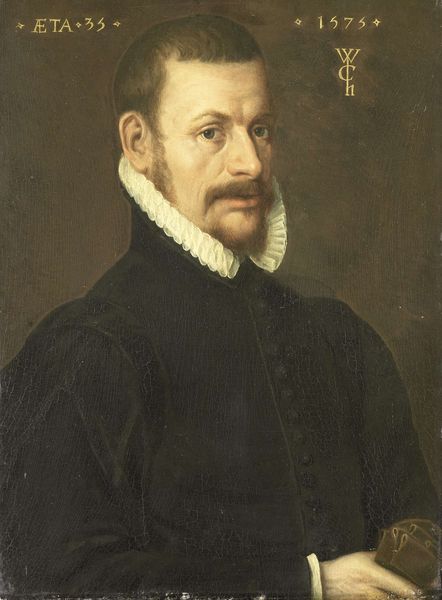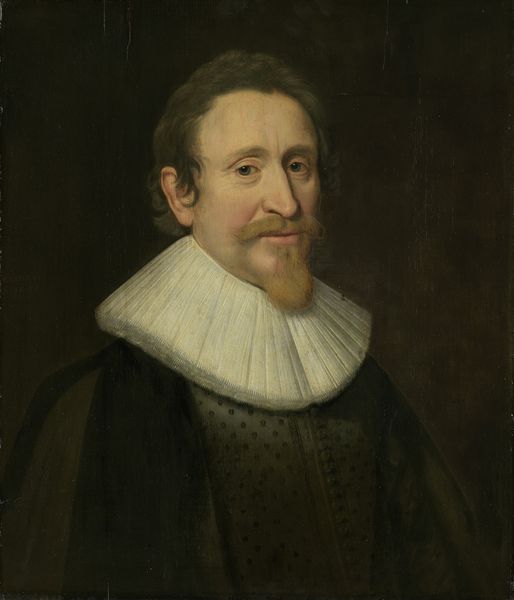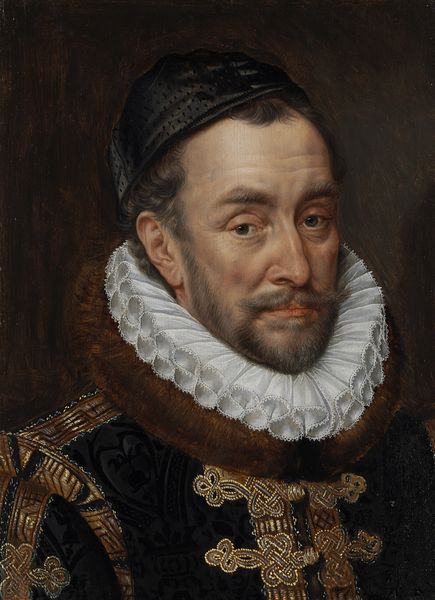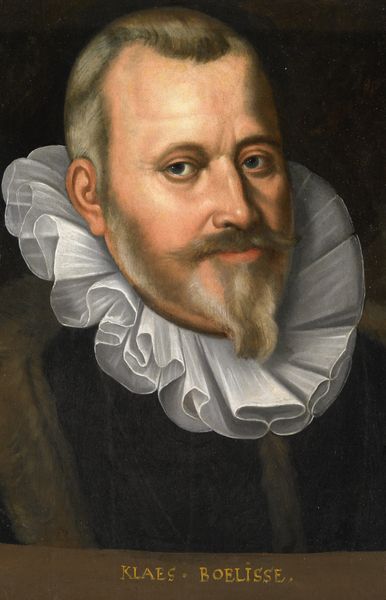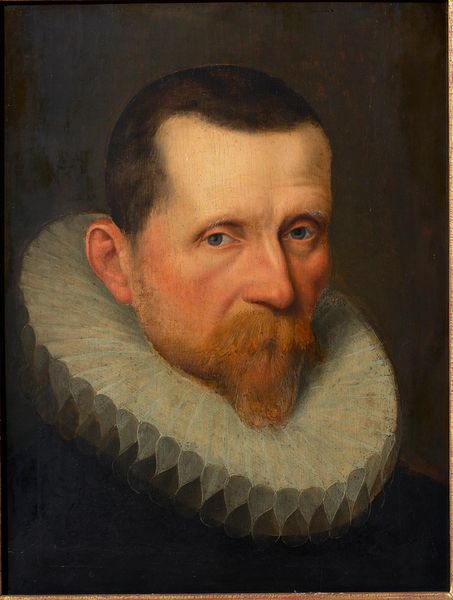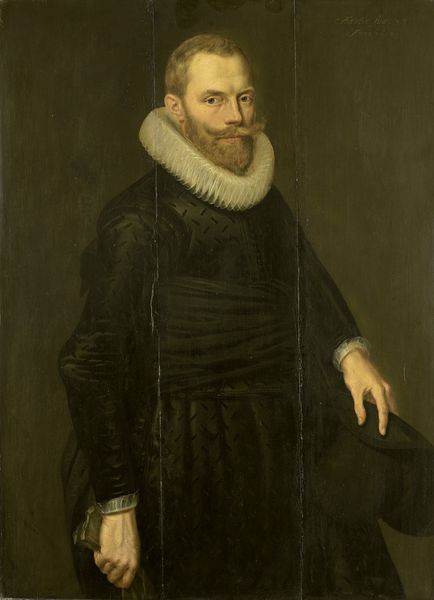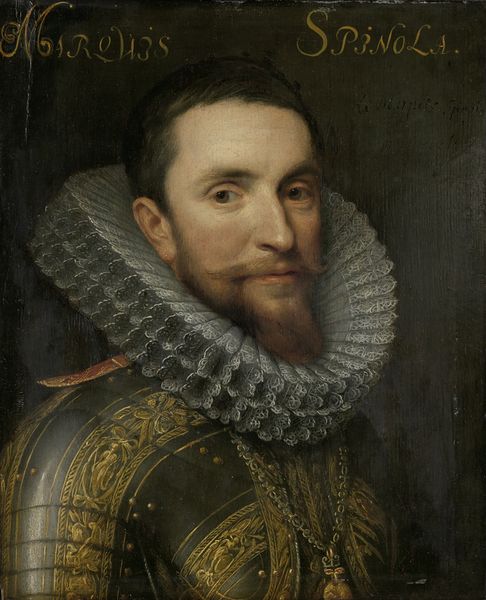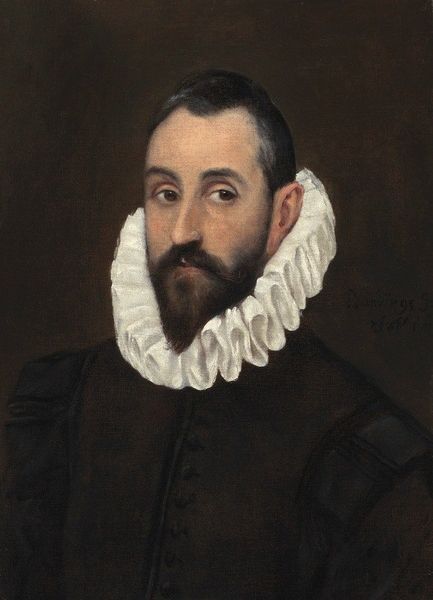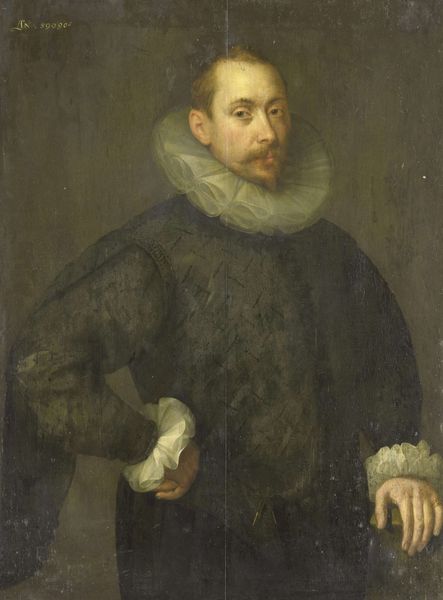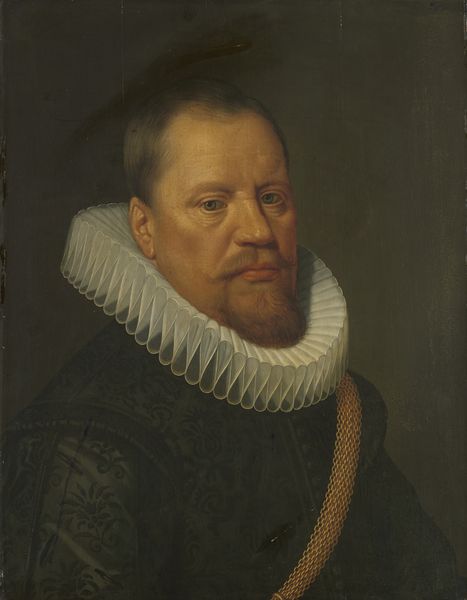
painting, oil-paint
#
portrait
#
painting
#
oil-paint
#
figuration
#
11_renaissance
#
history-painting
#
northern-renaissance
Dimensions: height 48.5 cm, width 35.5 cm
Copyright: Rijks Museum: Open Domain
Curator: Up next is Adriaen Thomasz. Key's "Portrait of Jacob Bas Claesz", painted in 1586. What's catching your eye? Editor: The stark contrast. It's immediately imposing, wouldn't you say? That pristine white ruff against the muted blacks and browns creates an intense focal point, drawing me right into his gaze. Curator: The ruff definitely signals status, but let’s look closer at Jacob Bas Claesz himself. Born in 1536, he was a silversmith in Haarlem and served as captain of the St. George civic guard. This portrait captures him towards the end of his life. Editor: The artist’s precise rendering of the fabric and texture suggests more than simple representation; the way light falls on the planes of the face is beautifully realized. His face appears fleshy and very much of this world. Curator: Absolutely, and remember, this was painted during a tumultuous time in Dutch history—the early years of the Eighty Years' War. Jacob's role as captain speaks to the militarization of everyday life. He literally bore the burden of responsibility. His gaze doesn't give much away, does it? There is a subtle, deep worry captured here. Editor: I’m struck by the realism and balance the work exudes, and there is the fascinating interplay of light and shadow to emphasize volume and form, all essential characteristics that point towards a more classical style. But did his status at the time give him certain entitlements or political clout? Curator: Of course. The painting itself is a symbol of power, placing him within a network of patronage and civic duty, cementing his family's position through visual representation, not unlike the family crest shown at the upper-left. But he was also actively involved in local governance, undoubtedly making decisions that impacted many lives. Editor: I do think Key succeeds admirably in producing something that captures its subject so effectively. A great study in the style and precision of portraiture of its time. Curator: For me, the portrait allows us to touch the pulse of a man living in a nation fighting for its very existence. It makes one contemplate the cost of freedom. Editor: Yes, but regardless of my take on its subject, I would contend that the way light caresses the details remains one of its greatest strengths.
Comments
No comments
Be the first to comment and join the conversation on the ultimate creative platform.

